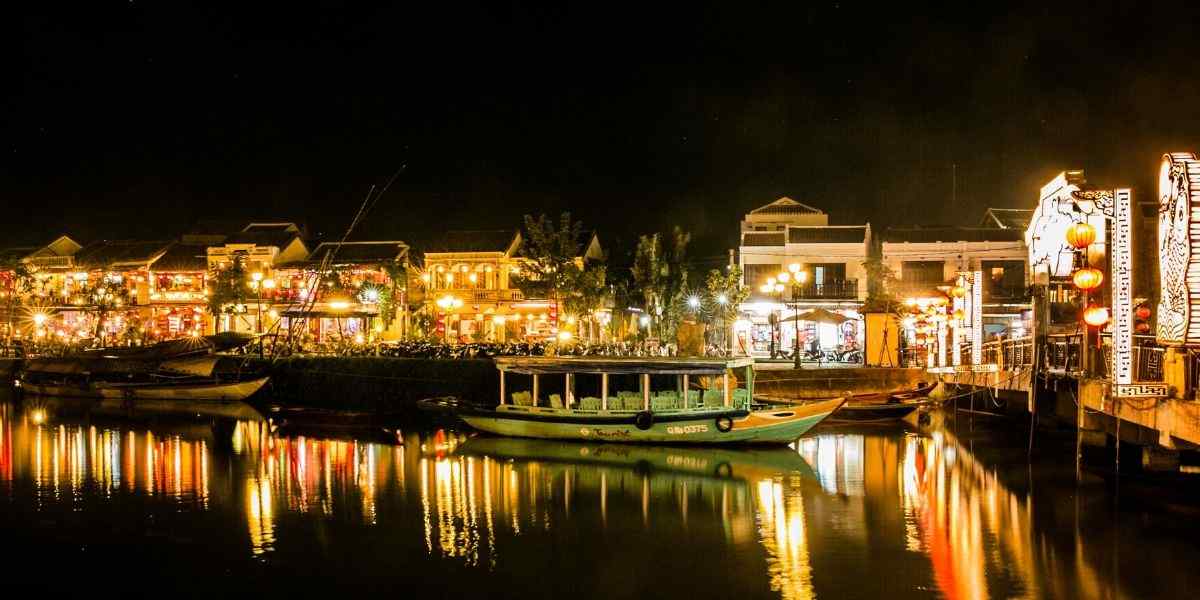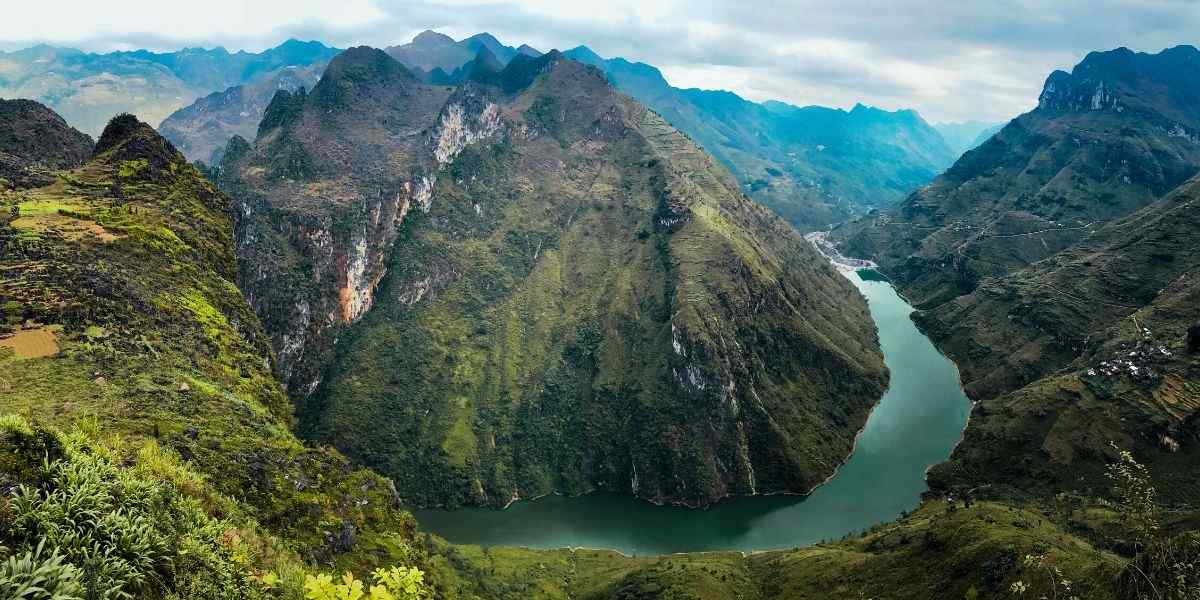Before telling you the best time to visit Vietnam we are gonna tell important things like –
- Visa for Vietnam travel
- Vaccinations for Vietnam travel
- Vietnam travel guide
- Tips for Vietnam travel
- How to travel Vietnam
- Best time to visit Vietnam
So you’re going to Vietnam. This beautiful country ranks high on our list of places to revisit and you’ll see exactly why throughout this article.
There are a variety of visas based on how long you plan on staying in the country and your country of origin.
we’ll just use a 30-day single entry visa for the purpose of the Vietnam travel guide.
1. Visa for Vietnam Travel

You have a few options for obtaining the visa.
- You can visit the Vietnamese embassy before you go.
- Get a pre-approval letter online for a visa on arrival or
- Simply do easy stuff which is done online.
It’s the easiest and cheapest of all the options is 3rd. Just fill out the requirements online and wait a few days for the approval.
You’ll need to print this out and keep a physical copy on you. The total cost is $25 and it can be taken straight to all passports lines upon arrival.
They will process it at the airport at no additional cost.
The pre-approval letter has two phases-
First is completing the online form which has an $18 service fee. You’ll receive your approval letter via email which you’ll bring with you to be it not once you arrive in Vietnam.
You must show your pre-approval letter and then pay a stamping fee of $25 per person.
This process takes a little time as you have to wait in a separate holding area while they process and stamp your passport.
We waited around 45 minutes the last and most expensive option is to visit a physical Vietnamese embassy one in Washington DC.
We were charged $90 for our visa and it occupied an entire page in our passport similar to the e-visa. You can head straight to the all passports line when you arrive and stamping is done at no additional cost.
If you plan on staying in Vietnam for longer than 30 days or you need a multiple entry visa.
2. Vaccinations for Vietnam Travel

There are no compulsory vaccinations for Vietnam travel required before you visit.
Although we would highly recommend that you’re up to date on your tetanus and hepatitis shots before you arrive.
Since we did some extensive travel in Southeast Asia, we took typhoid pills. We paid around $60 for the pills and the treatment-process took one week aim to finish your treatment at least two weeks before you go.
If you visit any CDC(Centers for Disease Control and Prevention) they’re gonna freak you out about virtually everything.
They even try to sway us into taking the Japanese encephalitis shot just in case. We avoided that shot and brought some bug spray and we were good to go, point making sure you’re up to date on your tetanus, hepatitis.
Take some type of pills and you’ll be just fine.
3. Vietnam Travel Guide

The main preferred vietnam travel advisory is either north to south or south to north.
The country’s two largest cities happen to be located at each point of the country which makes it ideal for flights in and out.
If you have the time and you’re ready for an adventure, a common option is to buy a motorbike in either Saigon or Hanoi and drive it up or down the country and then resell it in your final destination.
We thought about doing this but never got around to it although we met more than a few people, who were doing it and had an awesome experience.
We don’t know much about the expenses for that kind of experience but there are more than enough blogs that are loaded with information.
We’ve done both north to south and south to north and preferred going south to north but don’t stress because they are virtually the same thing.
4. Tips for Vietnam Travel

Power in Vietnam is 220 volts and outlets will accommodate any plug type A or C.
At this point, most of your electronics will have a voltage converter built into the charger so it can handle the power as it would back home.
The best way to check is to look at the charger, most of them will label the power voltage it can handle.
For example, if it says input power 100 volts to 240 you’ll be in good shape, a little trick we’ve shared before is bringing a three plug adapter because we travel with a lot of equipment and allows us to charge multiple things at once.
Internet in Vietnam is abundant and fast really fast the country is mega connected and there is Wi-Fi connection almost everywhere.
If you want to be connected when you travel this is the place to be there was never a shortage of great fast internet.
Anywhere we went, we’re not going to do a section on phone service in this guide but as with most international destinations you always have the option of buying a SIM card for your phone.
We were able to get by just using Wi-Fi and downloading anything we needed before leaving our hotel.
5. How to Travel Vietnam

You’ve picked your arrival city and now it’s time to map out your trajectory through the rest of the country.
This is one of the easiest parts because there’re so many options buses, trains, cars, and short flights interconnect the entire country.
We found negatives and upsides to each method of transportation buses come in abundance.
There are conventional sit-down buses and there are sleeper buses.
The obvious advantage of the sleeper bus lies in its name there are essentially seat beds that recline and allow you to get some shut-eye between the destinations.
These are a good choice for overnight halls but don’t expect to get the most comfortable sleep for tall people out there.
If you are over 6 feet just be prepared to be a little bit more cramped than the average.
They are one of the more economical choices and can save you money on a hotel room for that night.
You may or may not already be familiar with the trains in Vietnam. this is a reliable option of experience and it is a great option to quickly see the country.
You’ll want to make note of any public holidays or peak tourist travel times and booking your tickets in advance.
This can be done online or through many of the tourist agencies spread throughout the country.
Otherwise, a few days in advance is plenty of time to firm up your plans. we did the train as an overnight option to save on a hotel.
There are several classes of Coach available the most popular without a doubt are the air conditioner sleeper berth cars.
They’ll come in either a 6-bed or a 4-bed configuration. You’ll also have the option of purchasing at Harvard or a South Berg.
The difference here is a few inches of mattress thickness.
Your luggage travels with you inside your berth beneath the lower level beds.
There’s space for backpacks luggage etc unless you are traveling in groups of four or six be prepared to share your room with others.
It’s not uncommon for parents to bring along children and share the bed.
In some cases, train employees will look for empty beds to knock out a nap between cities.
if you do decide to go the train route, two things you should bring with you are snacks and toilet paper.
You can buy snacks and drinks on board but bring it with you saves the trip between carts.
The trains will make periodic stops at which you have the station vendors selling food and snack items, just in case you forgot to bring any with you or you want to try out the local items.
6. Best time to visit Vietnam – 2020
The country is almost 1,000 miles of latitude, more than California, so the weather varies rather dramatically.
The weather is affected both by the cooler winds coming from China in the north, as well as the warmer tropics in the south.
You can feel cold freezing winters in the north, while the south is warm and subtropical almost year-round.
The seasons in Vietnam are also impacted by widely ranging altitudes—from mountains where there is even occasional snow to the flat, sea-level loose soil plains of the Mekong Delta.
The best time to travel to Vietnam depends on the weather, season, festival, holiday, and you ( time, budget). I think the best time is spring (February to April) to visit and autumn (August to October).
The temperatures are more moderate and rainfall is lighter. However, climate changes according to the landscapes.
You can rely on other aspects to choose the best time to organize your Vietnam vacation, such as the time of Vietnamese traditional festivals or places you visit.
Sapa –

The best time to travel is March and April for warm and dry weather or in October and November for a cooler climate and clear days.
Avoid travel for 3 months: June to the middle of September ( Wet season, rainy, crowed)
Hanoi –

The best time to go is Autumn, October, and November, as days are not too hot( around 21°C with less rain and sunshine).
Halong Bay-

Halong Bay is in northeast Vietnam and known for its waters and thousands of towering limestone islands topped by rainforests.
The best time to travel is spring or autumn for the best chance of warm days and clear sky, perfect for cruising.
The Central of Vietnam –
The Central of Vietnam- The best time to visit is from February to August with hot and dry weather, the temperature is around 30 Celsius degree.
You can enjoy white sand and crystal clear water beaches.
During the winter months from October and November, it is the rainy season and occasionally typhoons hit.
Dalat –

In the mountains of central Vietnam. Dalat has adequate temperature year-round which only changes by a few degrees month to month.
From May to November when the rainfall is heavier this is year’s most green season but the surrounding countryside is bursting with color.
Saigon –

Saigon experiences consistently warm temperatures year-round, with balmy days averaging around 28°C The best time to visit the central of Vietnam is a dry season ( December – April).
Book Your Trip ->
You may also like to visit these –
- Where Is My Passport Book Number? – Facts About Your Passport
- All-Inclusive Resorts in Florida- Best 10 Resorts
- All-Inclusive Resorts in Hawaii – Best Hawaii Resorts
- World’s Top Romantic and Beautiful Wedding Venues












Pingback: Best Beaches In South Carolina -Top 10 Beach 2020 - Thirtytags